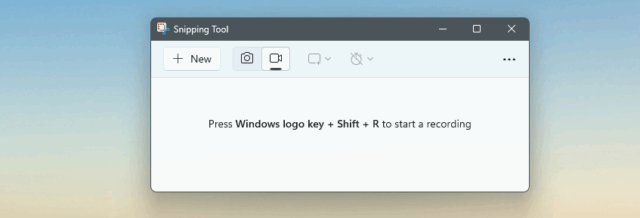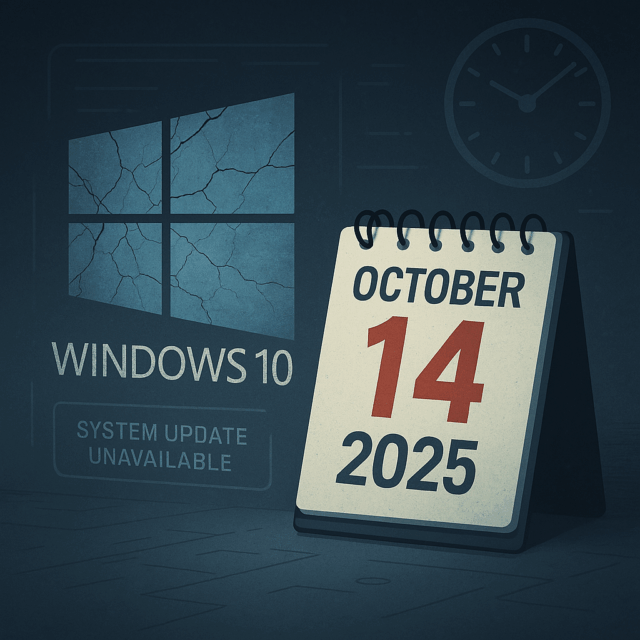There’s nothing more frustrating than an internet connection that doesn’t work when you need it most. Whether you’re trying to stream a movie, download an app, or just browse the web, a slow or unreliable connection can bring everything to a halt.
But before you pick up the phone to report a fault to your ISP (Internet Service Provider), there are a few simple checks you can do yourself. Not only can these help you fix the problem, but they also give you the information you need to explain clearly what’s going on if you do need to call for help.
This guide will walk you through what to check, how to describe the issue, who’s responsible for what, how to avoid unnecessary charges, and how to improve your home Wi‑Fi if that’s where the problem lies.
First, understand your setup: fibre vs Wi‑Fi
This is the most important distinction you can make:
-
Fibre refers to the fixed wired internet connection that your ISP delivers to your home. It typically ends at a small box on your wall, which is then connected to a device called the ONT.
-
Wi‑Fi is the wireless signal that lets your devices (like phones, laptops and smart TVs) connect to the internet within your home. It comes from your router, and its quality can vary from room to room.
Here’s the key point: your ISP is only responsible to ensure your connection works fine up to that fibre router they supplied. Everything beyond that—including the Wi‑Fi signal, extenders, mesh units, and home cabling—is your responsibility.
If you’re having problems, it’s important to figure out whether the issue is with the fibre line (your provider’s responsibility), or with your internal setup (yours).
Don’t just say “it drops” – describe the problem clearly
When people contact support, they often say things like:
“My internet keeps dropping.”
“It’s slow.”
“Netflix won’t stop buffering.”
Unfortunately, that doesn’t give your ISP much to go on. Here’s what you should try to answer for yourself:
-
Does the problem affect every device, or just one?
If your phone is fine but your laptop isn’t, the issue is likely on the laptop itself. -
Is the problem the same in every room?
Wi‑Fi doesn’t travel through walls or floors very well. If the problem only occurs far from your router, it may just be a signal issue. -
Is it only certain websites or apps?
Netflix buffering doesn’t always mean your internet is down. It could be their servers, or something in the app. -
Are the lights on your ONT or router changing?
If the ‘Internet’, ‘WAN’, ‘PON’, ‘LOS’ or any other light turns orange or red, goes off, or starts blinking when the problem happens, this could suggest a fibre or line fault.
A buffering stream doesn’t always mean your internet is broken
It’s important to understand that buffering or slow downloads aren’t always caused by your connection. Other reasons could include:
-
The server you’re connected to is overloaded or poorly configured
-
The website or service is experiencing high demand
-
There are too many people or devices using your connection at the same time
Also note: unofficial or pirated streaming sites often deliver poor quality, even if you’ve paid. Unlike official services (Netflix, Showmax, DSTV Stream, YouTube), these shady providers often use congested or unreliable servers.
Always test on a clean connection
When running tests or trying to work out what’s wrong, you need to make sure that nothing else is using the internet at the same time. That means:
-
No one streaming YouTube or Netflix
-
No games or apps updating in the background
-
No cloud backups, file sync, or security camera uploads
You’d be surprised how often someone runs a speed test and thinks their fibre is faulty—only to find out their teenager is downloading a massive game at the same time.
If you want a truly accurate picture, pause or disconnect all other devices, or test late at night when no one else is using the internet.
How to find out what’s using your connection
Many routers let you view all connected devices and sometimes even how much each one is using. Look for:
-
“Connected Devices” or “Device List” in your router’s settings
-
Use a mobile app like Fing to scan your network
-
Use
arp -aon a Windows computer to show all known devices on your network
If you see devices you don’t recognise, change your Wi‑Fi password and reboot your router to kick out unauthorised users.
Your ISP may charge for work outside their scope
If you request a technician, be aware: if the fault is inside your home network, your ISP may charge a call-out or diagnostic fee. This includes:
-
Problems with your own router (if it wasn’t supplied by them)
-
Wi‑Fi coverage or dead spots
-
Issues with your home’s internal cabling
-
Device-specific misconfigurations
- Any other issues, such as problems with a specific device, app, website or service
That’s why it’s a good idea to do as many checks as you can yourself before reporting a fault.
Expanding your Wi‑Fi: it’s your job, not the ISP’s
Most providers supply only basic routers. These are good enough to cover a small flat or open-plan home—but they’re rarely enough for double-storey houses, thick walls, or larger homes.
Here’s what you need to know:
-
Your ISP is not responsible for making sure your entire home has perfect Wi‑Fi coverage. Their responsibility ends at the router’s wireless broadcast.
-
They are not required to give you premium routers or boosters for free.
-
If you want better coverage, it’s up to you to upgrade or expand your setup.
Here are your options:
-
Move your router to a more central location
-
Use a mesh Wi‑Fi system like TP-Link Deco, Google Nest, or Cudy Whole Home Mesh
-
Install Wi‑Fi extenders (a cheaper but less reliable option)
-
Run Ethernet cables to key rooms and add access points
If you’re unsure what you need, you can ask any local IT support company to perform a wireless assessment of your home. This is a paid service in most cases, but it can save you a lot of frustration.
Watch out for interference
Wi‑Fi is sensitive. Many things can block or interfere with your signal:
-
Glossy surfaces, mirrors, fish tanks
-
Wooden cabinet doors (especially if your router is inside a cupboard)
-
Microwaves, cordless phones, baby monitors, Bluetooth devices
-
Burglar alarms, garage openers, even older smart appliances
(This is list is not exhaustive, there are many more!) If you place your router near any of these, your signal can be disrupted. Try to keep it in an open, high spot, away from electrical devices.
Why wired is always better
Whenever possible, use a wired connection—especially for things like:
-
Streaming on a smart TV
-
Online gaming
-
Work-from-home video calls
-
Large downloads or file uploads
Wired connections are faster, more stable, and not affected by walls, interference or congestion. Even if you only run a cable to one key device (like your TV or PC), you’ll immediately notice the difference.
So… when should you call your provider?
Only once you’ve:
-
Checked that all cables are firmly connected
-
Rebooted your router and modem
-
Tested on a device connected via cable, not just Wi‑Fi
-
Made sure no other devices or apps are using the internet during the test
-
Tried different websites and apps, not just one
-
Noted what happens to the router lights during the issue
-
Gathered details like what devices are affected, when it happens, and what you’ve tested
If, after all this, you’re still seeing drop-outs or no connection—even when plugged in directly to the router—that’s the time to contact your provider.
Be clear and specific. For example:
“I’ve tested with a cable. The issue affects all devices, and the router’s internet light goes off briefly when the problem happens. I’ve ruled out other devices, checked for interference, and made sure nothing else is using the connection during testing.”
That kind of information is incredibly helpful to your support agent—and it may also save you from being charged for a technician visit.
Now that you’ve reported to your ISP – What to expect from support—and why urgency may vary
Many people today use their home internet lines for work, side businesses, or even to run full-time operations from home. It’s understandable that, when the connection goes down, the pressure feels immense. Customers often tell their ISP:
“I can’t work without internet.”
“I’m losing money, fix it immediately.”
However, it’s important to understand the type of service you’re paying for.
Most residential fibre or wireless packages are sold under a home-use service level agreement (SLA). This means the support response and repair times are based on non-critical residential usage, not business-class reliability.
Depending on the provider and region:
-
Minor faults (such as slow speeds or degraded service) typically have a repair timeframe of 1 to 3 business days
-
Complex or infrastructure faults (like line replacements or exchange issues) may take 3 to 5 business days or more
There is no guarantee of same-day repair for home-use lines, even if you’re working remotely. If internet is critical to your income or business, it is your responsibility to have a backup connection—such as mobile data or a business line with guaranteed response times.
Most providers will not refund you for:
-
Lost income
-
Alternative data packages
-
Downtime on a personal or home use account
Additionally, “uncapped” data means you can use the internet as much as you like over the course of the month. It does not mean:
-
Unlimited speed or priority on the network
-
Guaranteed performance on a specific day
-
No management of traffic during peak hours
It’s always worth reviewing the terms and conditions of your package to understand what support you’re entitled to—and where the limits lie.
Final thoughts
Internet problems are annoying, but most can be narrowed down with a few common-sense steps.
Before calling for help:
-
Understand whether the issue is with your fibre or your Wi‑Fi
-
Test on a clean, idle connection
-
Know who’s connected to your network and what they’re doing
-
Realise that ISPs aren’t responsible for fixing your home Wi‑Fi
-
Take control of your setup: expand your network if needed, and use cables where possible
-
Be prepared with facts when you contact support
It’s your home network—and the better you understand it, the easier it becomes to enjoy fast, stable internet in every room.





